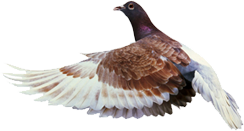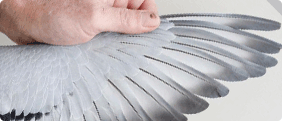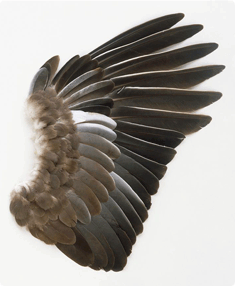Feathers:
Today, the remaining feathers in the slaughterhouse are used to produce livestock and poultry manure, or to prepare pillows. To make pillows more than goose and duck are used. To fill the pillows, feathers and feathers are used. Pigeon feathers are not suitable for pillow making, and most are used to produce powders or fertilizers. The powder has a high percentage of protein (about 80%), but the protein digestibility of the powder is low, and the methionine amino acid is also poor. Fat fertilizer is used extensively due to its high nitrogen content in agriculture. In summary, the powder production process is as follows:
1) Collect the feathers
2) Temporary storage
3) Cook
4) Drying
5) crushing
6) Packing.
Wet feathers are cooked for a period of 30 to 60 minutes under high temperature and high pressure (from 2.8 to 2.4 pounds per square centimeter and from 142 to 153 degrees Celsius) and then dried.
If you look at statistics, you will see that an enormous amount of waste is produced annually from the poultry industry, which amounts to 11 billion pounds. Since we have a lot of appetite for the production and consumption of pigeons, these birds will go beyond the human need to fill the pillow. Birds usually use low-grade animal feeds. Scientists in Nevada have been able to produce new eco-friendly biodiesel fuel made from pigeon powder. Professor Manoranjan Mirsa (Mano) and his research team at Nevada University have discovered a biodiesel fuel that comes from the processing of pigeon powder, blood, and its internal parts. Powdered pigeons are processed at high temperature with steam, this powder can be used as animal feed and fertilizer. Pigeon powder contains a high percentage of protein and nitrogen. Researchers have looked at the 12 percent fat content of powdered pigeons with high significance and concluded that pigeon powder has a high potential for replacing raw materials for the production of biofuels. They have achieved biodiesel biofuel by using fat extraction in pigeon plow and boiling it in water and processing it. One of the other uses of this practice is that by extraction of fat from pigeon powder, a higher grade animal feed or a richer nitrogen source can be used for use as fertilizer. Given the world's highest annual pumice production figures, researchers could expect to produce 153 million gallons of biodiesel annually in the United States and 593 million gallons worldwide.
Professor Misra, director of the University of Nevada, is Renault's Renewable Energy Center. He has published 183 technical papers in the fields of materials, nanotechnology, environmental engineering and minerals engineering. He also holds 10 points for a published letter and 12 points for a student exam, with more than $ 25 million in scholarship and research grants. Other ongoing research is about the pigeon, which includes stronger creatine fiber and the ability to absorb more than wood. Professor Richard P. Wool of the Department of Chemical Engineering at Delaware University is studying carbonated pigeon, this type of pigeon is very similar to different carbon nanotubes. These feathers can be used to store hydrogen in vehicles equipped with fuel cells. If we look at it, we can see that the pigeon can have a much greater storage capacity than hybrid storage metals. Woll, a graduate student at Erman Senöz, explained that they studied the process of thermal decomposition. During this process, the heat is applied very high without combustion in the absence of oxygen. In this range, the micro-porous fibers are very thin and hollow, such as carbon nanotubes. It starts at 350 ° C, and temperatures drop above 500 ° C, and we are trying to find the best temperature for it.
Pigeon feathers have been used similarly to goose feathers throughout history. They were considered to be a little less prized, but still very useful.
There is still a market for Pigeon feathers, though it may not appear that this is the case initially. Pigeon feathers carry mites. Mites that EAT the feathers and leave holes in them. Not very attractive. And a rather yucky thought to consider little mites chowing down on your pillow right under your ear.
But a simple treatment can rid the feathers of the mites. This is what saved them historically. At some point or other, the feathers would end up getting frozen - home heating just was not what it is today. Chances are they were stored outside at some time and probably froze then.
Freezing is the solution to those mites. Freeze their little legs off. Pop those feathers into the freezer for 24 hours or more. Take them out and let them warm up for 24 hours, then pop them back in for another run.
The first run kills the mites. The warm spell lets any remaining eggs hatch, and the second freeze kills the remaining critters off.
Miteless feathers. Which now have a usable value, and can even be sold, as long as you specify that they've been treated to kill the mites.
Pigeon feathers are not only good for stuffing pillows, beds, comforters, and other items, they are good for use in crafts as well, and can be dyed or painted.